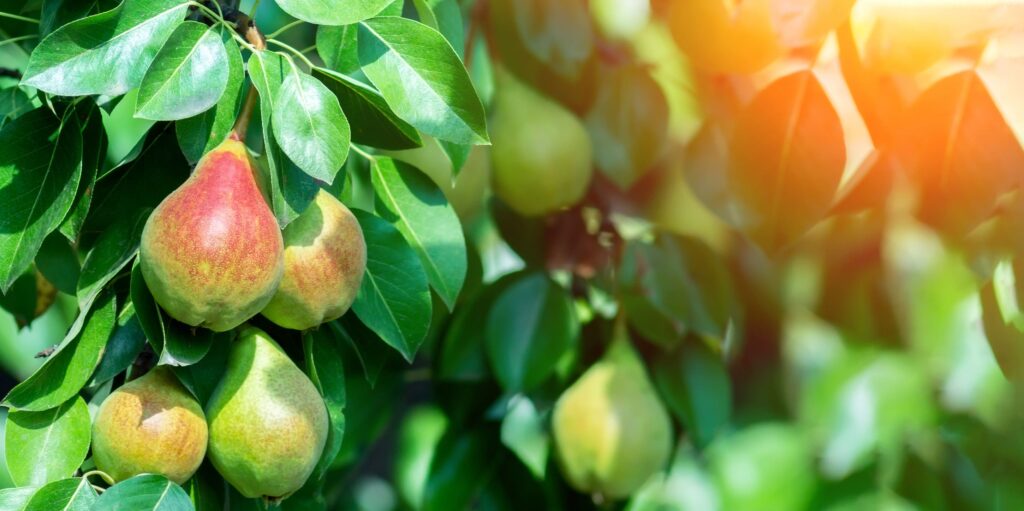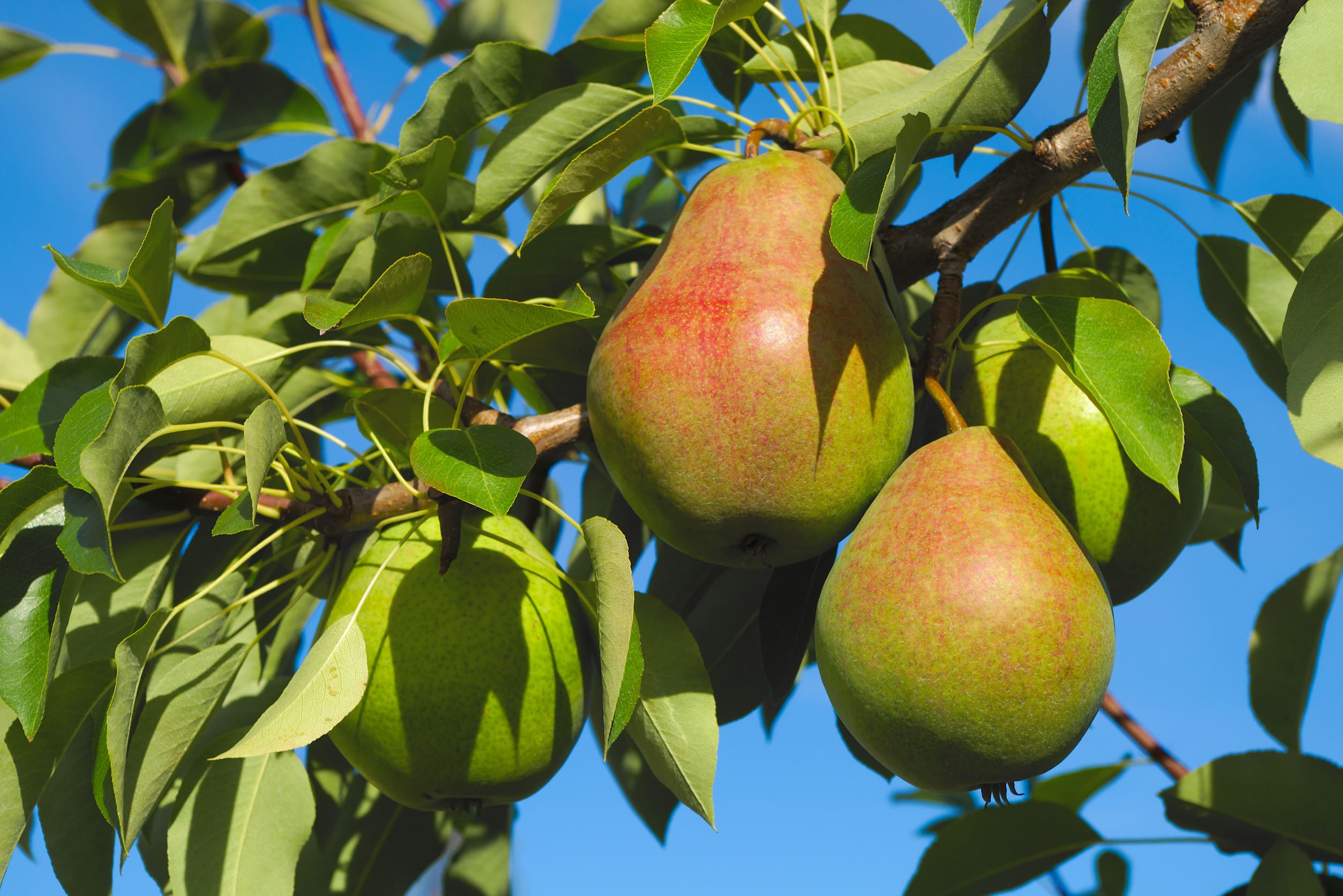Pear scab is a fungal disease caused by Venturia pirina that primarily affects pear trees, impairing the appearance and quality of the fruit. This disease is manifested by the appearance of spots on leaf and fruit surfaces, which evolve into irregular, necrotic patches, a phenomenon known as pear scab.
This condition, in addition to affecting the aesthetic value of the fruit, weakens the plant, affecting the overall productivity of the orchard.
Pathogen characteristics and mode of infection
Venturia pirina is an ascomycete fungus that thrives in conditions of high humidity and mild temperatures. The spores, released through conidiogenous structures, are deposited on the surfaces of pear trees, finding fertile ground for germination early in the growing season. The pathogen penetrates tissues through micro-lesions or abrasions, often due to environmental stress or mechanical injury. Once inside, the mycelium spreads, causing the formation of spots that gradually expand and coalesce, altering the appearance of the fruit.
Scab of the pear tree is manifested by the appearance of irregular spots on the skin, which develop into necrotic areas. These changes not only impair the aesthetic quality of the fruit, but can also affect its firmness, reducing its commercial value.
Infectious cycle and conditioning factors
The infection cycle of Venturia pirina develops in several stages:
- Winter survival: During winter, the fungus survives in the form of survival structures on leaf debris or in the soil.
- Germination and entry: with the arrival of spring, and in favorable moisture and temperatures, the spores germinate. The fungus then enters pear tree tissues through micro-lesions, initiating infection.
- Mycelium expansion: mycelium spreads within tissues, causing localized necrosis and the formation of typical spots. Favorable environmental conditions, such as frequent irrigation, accelerate this process.
- Spore release and dispersal: the fungus produces additional spores that, carried by rainfall and wind, spread the infection to other plants, perpetuating the infection cycle.
High humidity, together with frequent watering and insufficient ventilation, creates ideal conditions for pathogen activity, promoting its proliferation and expansion.
Clinical manifestations in orchards
In pear trees, the first signs of infection are evidenced by light patches that darken and turn brown as the disease progresses. On fruit, scab shows up as irregular patches on the skin, which can develop into areas of widespread rot. Other characteristic signs include:
- Leaf lesions: infected leaves have spots that reduce photosynthetic area, impairing plant efficiency.
- Fruit deterioration: affected fruits show changes in texture, with necrotic areas affecting juiciness.
- Premature fruit drop: in severe cases, infection induces premature fruit drop, resulting in production losses.
Monitoring and early diagnosis
Timely diagnosis of pear scab and pear scab is essential to limit the spread of infection and preserve crop quality. The use of digital technologies, based on high-precision sensors, makes it possible to constantly monitor the physiological parameters of pear trees. These devices measure, in real time, water flow and sap composition, detecting changes that can anticipate the onset of clinical symptoms.
Tools such as Plantvoice® integrate these sensors into the monitoring system. Although mentioned succinctly, the system collects valuable data that enables the identification of at-risk areas and the activation of targeted interventions. This approach allows operators to intervene early, preventing uncontrolled pathogen expansion.
Summary Table of Pear Scab and Scab of Pear Tree Scab
| Appearance | Description |
| Pathogen | Venturia pirina |
| Crops Affected | Pear trees and other fruit crops |
| Leafy Symptoms | Initial pale spots that gradually darken |
| Symptoms on Fruits | Scab: irregular spots on the skin, evolving into necrotic areas |
| Favorable Conditions. | High humidity, frequent watering, mild temperatures |
| Mode of Diffusion. | Dispersion of spores by rainfall and wind; penetration through microcracks |
| Digital Monitoring | High-precision sensors (Plantvoice®) that analyze water flow and sap composition |

Intervention and management strategies
Effective management of pear scab and pear scab is based on an integrated approach that combines traditional agronomic practices and digital monitoring. Key operational strategies include:
- Optimization of irrigation: careful regulation to avoid water stagnation that promotes spore germination.
- Systemic visual inspection: regular checks for early detection of early spots and signs of scab.
- Removal of infected residues: timely sanitization to reduce the inoculant load in the soil.
- Continuous monitoring: use of sensors that detect changes in physiological parameters, supporting targeted interventions on risk areas.
By integrating these practices, pathogen activity can be contained and orchard productivity can be protected.
FAQ – Frequently Asked Questions about Pear Scab and Pear Scab
- What is pear scab and how does scab of the pear tree manifest itself?
Pear scab is a fungal disease caused by Venturia pirina that manifests as light spots that darken on leaves and fruit, evolving into irregular scab on the skin. - What environmental conditions promote the development of this disease?
Infection develops in the presence of high humidity, frequent watering and mild temperatures, conditions that facilitate spore germination. - How does the fungus penetrate the tissues of pear trees?
Venturia pirina enters plant tissues through micro-lesions or abrasions found on the surface of fruits and leaves. - What are the main symptoms observable in orchards?
There are leaf spots that gradually darken and, on the fruit, scab that leads to the formation of necrotic areas, often accompanied by premature dropping. - How can digital monitoring support disease management?
High-precision sensors, such as those used in Plantvoice®, monitor water flow and sap composition, detecting early abnormalities that indicate the presence of infection.



